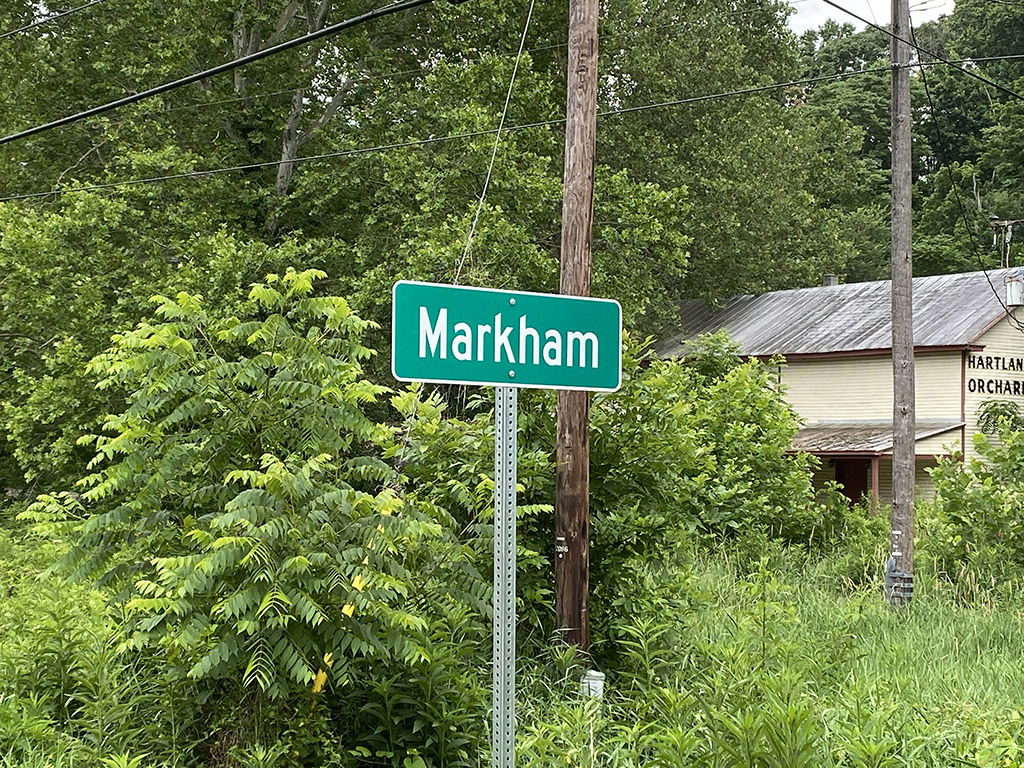Home to Chateau O’Brien Winery at Northpoint, the Village of Markham was born on the town’s western edge in an area called Farrowsville, which was the northern point of a stage line that came in from Culpeper along Leeds Manor Road, an important colonial north-south corridor.
In the early 1800s, Farrowsville boasted at least eight mills which were powered by the headwaters of Goose Creek. The mills and stage line supported a tavern, two mercantile stores, and a “house of public worship free for all denominations.” This church, Upper Goose Creek Primitive Baptist Church, survives today. There are still unsolved mysteries about the locations of the mill foundations and other early structures in this part of Markham Village.
In 1852, the Manassas Railroad arrived in Farrowsville on its way to Strasburg into the Shenandoah Valley. The center of the village moved to the east along the rail line, which is today marked by a railroad station, two hotels, a former mill, store, church, and multiple dwellings. The town was a center of military activity during the Civil War because of its strategic location. The western end of the village along John Marshall Highway showcases an elaborate Victorian dwelling and an assortment of late 19th-century stores and residences.
Markham is on the National Register of Historic Places because of its intact and varied styles of architecture and because of its association with military, transportation, and commercial life in 19th century America.
The National Register District encompasses approximately 81 acres along a one-mile stretch of railroad, Marshall Highway, and Goose Creek. The district contains 24 properties with 48 contributing resources. The modern homes that have been built on the periphery of the district have not altered the historic character of the area by virtue of their siting and size.

